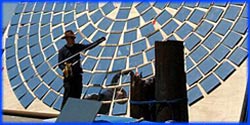


Premier Date: May 10, 2006
confirmed
The Build Team tried to ignite cotton denim pant swatches soaked in fertilizer, gun cotton solution, black powder, and the herbicide sodium chlorate using an open flame, radiant heat source, friction, and impact, but only the herbicide could ignite with sufficient energy under the above conditions (except for friction), and it was particularly reactive to impact. In a full-scale experiment using Buster, paramedics on-hand stated that Buster would most likely survive from the blast with only some burns.
(This myth comes from New Zealand in the early 1930s, where an epidemic of the myth had rampaged, injuring and even killing farmers. The culprit was a then-unknown chemical substance that farmers began using in large quantities at the time.)
busted
No change to fuel efficiency.
busted
The acetone was less fuel efficient.
busted
Far less fuel efficient.
busted
The cell didn’t work with the car, and while the car did start unmodified when pure hydrogen was introduced, the hydrogen was also violently ignited soon afterwards, making it an unlikely – and expensive – alternative.
partly confirmed
Although there’s no word on damage to the engine from using used cooking oil, a diesel-fueled car did run on it. However, the MythBusters speculate that once this alternative fuel achieves a significant interest level among the public, used cooking oil will be hoarded as a salable commodity. The used cooking oil also did not quite fit the requirement of improved fuel efficiency, as it yielded approximately 10% less distance for an equivalent amount of diesel.